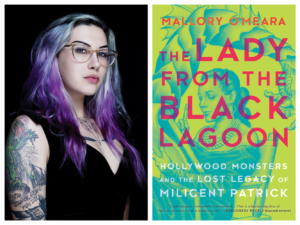
I’ve never been a big fan of horror movies; why would I want to pay someone to scare the daylights out of me? But when I was talking to Mallory O’Meara, author of “The Lady from the Black Lagoon,” she had a completely different — and logical — perspective.
“Horror is a weirdly calming, comforting place,” she said. “All of these monsters are metaphors for something bad, and we see them get destroyed. It’s cathartic.”
O’Meara is an author, screenwriter and producer, and a self-proclaimed lover of monsters and horror entertainment of all types. Her passion radiates through her projects and is on full display in “Lady,” a project she began because she couldn’t find enough information about one of her heroines in horror, Milicent Patrick.
Until recently (and I mean very recently, as in right around the time O’Meara’s book was published), Milicent Patrick had faded almost entirely away from the annals of monster movies and horror films. Yet, as O’Meara discovered and chronicles, Patrick was responsible for designing the Creature in the “The Creature from the Black Lagoon,” a beloved monster classic that filmed its underwater scenes just minutes away at Wakulla Springs.
Patrick’s Creature was possibly one of the most famous monsters of all time, yet her legacy was all but erased due to rampant sexism coupled with a male supervisor jealous of her star power. Women just weren’t in the horror industry, something O’Meara initially struggled with. Until, that is, she found an old photograph of Patrick working on the Creature suit. It was transformational.
“Seeing that photo was like seeing a doorway that had never been there before,” said O’Meara. “I realized I had a place, as a woman, in the industry. I hadn’t yet been able to visualize that future.”
It was this connection that propelled her through the challenges of writing “Lady”; O’Meara said it was at least three years of getting pushback from male historians, draining her bank accounts and researching Patrick so she could reverse engineer the story from little bread crumbs here and there.
Fortunately for the reader, O’Meara brings them along for the adventure, laying out the details of Patrick’s life while simultaneously working through the investigative journey (really, the book is worth the read for the snarky footnotes alone).
I now know more about monster movies and the horror genre than I ever thought possible, but now I also know about Milicent Patrick, an artist and a pioneer. And I have O’Meara to thank for that.
This article was first published in the Tallahassee Democrat.
